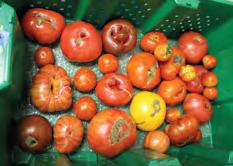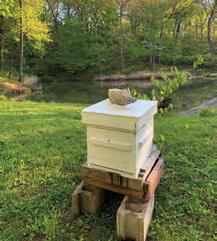
3 minute read
A Place in the Country by Bill Ziercher
A Place in the Country
BY BILL ZIERCHER
Bill Ziercher is the founder of Select Properties Real Estate. He has been active in building, buying, selling, and managing rural real estate and income property for over 25 years. For a free consultation on marketing your rural property, you can contact Bill at 314.412.3966. and for copies of previous “A Place in the Country” Articles you can email him at ziercher59@gmail.com.
Back-to-the-Land
n the past few years there has
Ibeen an uptick in “Back-tothe Land”, where many rural and metropolitan people are using land for organic crops and food production, sustainability, self-sufficiency and an abiding sense of pride and self-satisfaction. In this article we dive a little deeper in some of the more common trends. Like many things, this interest has been accelerated by stay-at-home lifestyle changes brought on by Covid.
GARDENING Some of my most fond childhood memories are with my grandmother Florence. I spent a lot of time with her growing up after my grandfather and namesake died when I was four. I remember helping her turn the garden and tend to the asparagus bed, rhubarb plants and the normal mainstays of a country woman who had lived through the depression. In the kitchen she had two bins: garbage and trash. The garbage was for any and all organic matter to dispose in the garden. Her garden soil was coal black from feeding it compost and garbage over many years. Fast forward to today with many of these practices coming back, along with things like heirloom tomatoes and other gardening rewards. FIREWOOD There is just something captivating about a fire. I am sure it has to do with our amygdala, or the lizard part of our brain. Besides the ambiance of a fire, many rural homeowners have outside wood boilers. These highly efficient heat sources feed into a home’s HVAC system using a boiler. For many this is the main source of heat, saving hundreds of dollars a month on electric or propane bills.
These systems are backed up usually by an electric furnace. For myself, I always split my own wood. Not only does that appeal to my lizard brain, but it provides a great workout and gets me out of the house in below-freezing weather.
FOWL One does not have to look far to see more chickens and ducks in both rural and metro area backyards. Yes ducks, which are an excellent source of eggs, producing 300 eggs annually and are especially prized for baking, with higher fatty acids and protein than chicken eggs.
A growing number of municipalities like Ladue, Maplewood and Olivette now allow chickens within certain guidelines. BEES My 20-year-old son is an apiarist, more commonly known as a beekeeper. He keeps an apiary or beehive in our backyard and also at our farm. In addition to harvesting the honey, which is a good source of vitamins and minerals, he gives back to the environment through pollination. The USDA has been aggressively promoting the CP-42 initiative under the Conservation Reserve Program (CRP) that provides technical and financial assistance to offset the decline of habitat for pollinators like bees, moths, insects, bats and birds which we depend upon to pollinate crops. VENISON Last but not least is venison, yes, I am talking about Bambi’s dad and mom. There is an entire industry built around the satisfaction of harvesting deer with a stick (more commonly known as a bow and arrow), muzzleloader or modern firearm. Here we are going to explore one of the absolute best sources of protein. Besides all my grandkids knowing that not all protein comes on Styrofoam trays heat wrapped with film, they learn the healthy benefits of consuming free-range deer and elk. These benefits include a complete source of antibiotic-free protein, lower in saturated fat than other red meats and high in iron, zinc and vitamins. When prepared correctly it is absolutely excellent table fare.

The seeds are what make an heirloom tomato, passed down from season to season, taken from plants that produced the best fruit, often open-pollinated, which means that they are pollinated naturally, by birds, insects, wind, or human hands.












